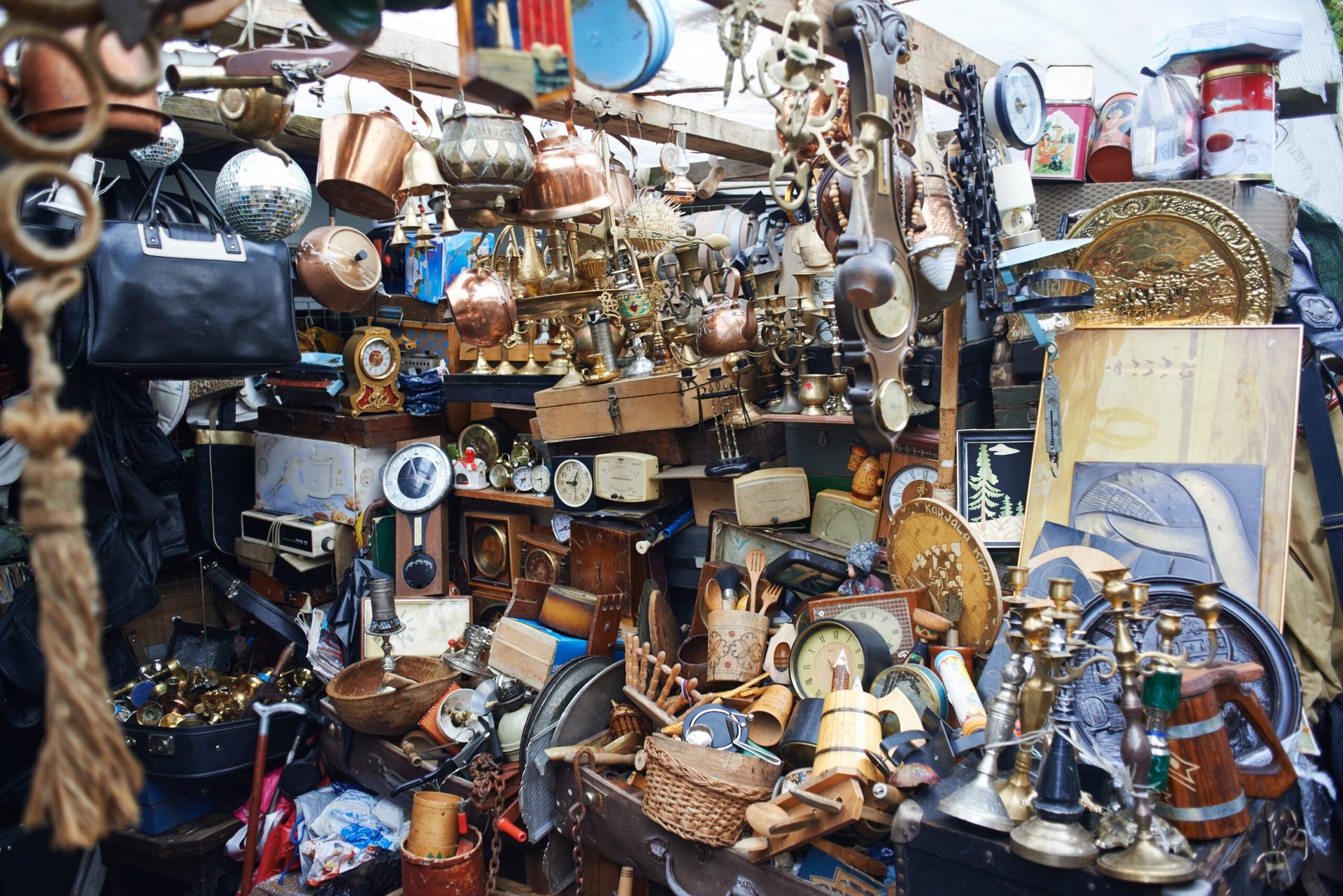
Shopping thrift stores, flea markets and estate sales can be overwhelming. With the sheer volume of stuff, how do you know where to start? How do you spot gems amid all the … well, junk?
As a professional reseller who has been combing through thrift stores for the better part of 30 years, I can help. If you’re ready to cut your shopping time in half, score bigger bargains or walk away with brag-worthy finds you can flip for cash, read on.
From hard-to-find household items to resale money-makers, everything featured in my “Thrift Shop Like a Pro” series qualifies as a BOLO (Be On the Look-Out for) item. When you find it, buy it!
Featured find: Martz lamps
A lamp is a lamp, right? Not always. Some lamps are special. For the past 20 years, Martz table lamps have been on my bucket list of “dream finds.”
Recently, my hunt came to a happy — no, ecstatic — conclusion when I found an unlabeled Martz lamp in the wild for $20.
In 1949, Jane Marshall met Gordon Martz at the New York State College of Ceramics at Alfred University in Alfred, New York. Both were students at the college, and both had a keen sense of design and creative exploration.
In 1950, the two married and decided to combine their creative talents by joining Jane’s family business in Veedersburg, Indiana. Her grandmother, Jessie Talbott Marshall, had founded Marshall Studios in 1922.
When Jane and Gordon came on board, the company was producing hand-turned wooden lamp bases and hand-painted lampshades. The young couple expanded the product line to include stoneware lamp bases, dinnerware, sculptures, and small tables topped with inlaid tile.
In 1953, a Martz lamp was part of the Good Design exhibition at New York City’s Museum of Modern Art.
Jane and Gordon sold their interest in Marshall Studios in 1989 and retired. The company was purchased by Genesis Wood and Stoneware, and its assets were liquidated in the mid-1990s.
Why buy it?
Many of the contemporary lamp designs we see today are based on the Martz aesthetic. The pair made modernism accessible to the masses and promoted a simplicity of form that turned everyday objects into works of art.
If you’re lucky enough to find a Martz lamp, live with it for a while. It may launch a healthy obsession to find your next Martz masterpiece (and the next … and the next).
If you are interested in reselling Martz lamps for profit but are unfamiliar with Marshall Studios or Martz, brush up and cash in. This pair of Martz lamps recently sold for $2,145 on eBay, and this monumental table lamp is listed for $3,500 on Etsy.
To top it off (pun intended), even original Martz lamp finials get collectors excited. (Finials are the often-ignored threaded pieces that secure the lampshade to the lamp harp.) Recently, this teak finial sold for $41 on eBay.
What to look for
Lamps were usually hand-signed “Martz” near the electrical cord opening on the lamp base. The Marks Project — a wonderful resource for ceramic collectors and resellers — showcases several variations of the incised signature.
But like the one I found, not every Martz lamp was signed. (That would make life too easy, right?) It took a solid hunch and combing through old online product catalogs to confirm my purchase was authentic.
Here are a few other features that can help you determine if your find is the real deal:
- Finial: Though historical information about Martz finials is limited, we do know that many lamps were topped with solid walnut, oak or teak.
- Glaze color: Except for vibrant blues, most Martz lamps were glazed in earth tones. The standard color range included chocolate brown, pale gold, cream, mossy green and black.
- Shade: Though original lampshades are often replaced, an aged, natural fiber shade is another clue that can help confirm an authentic Martz piece. And if you find an orphaned shade, buy it. Serious collectors will pay top dollar to match their Martz lamps with Martz shades.
- Underwriters label: Martz lamps were tested and approved by Underwriters Laboratories. Many lamps still retain the paper Underwriters label co-branded with “Marshall Studios Inc., Veedersburg, Indiana.” Look for the UL label on the underside of the lamp or near the incised signature.
Pro tip: Seventy years later, midcentury Martz lamps are still more prevalent in the Midwestern U.S. If you live in Indiana, Ohio, Iowa or Illinois, you have a better chance of finding one locally.






Add a Comment
Our Policy: We welcome relevant and respectful comments in order to foster healthy and informative discussions. All other comments may be removed. Comments with links are automatically held for moderation.